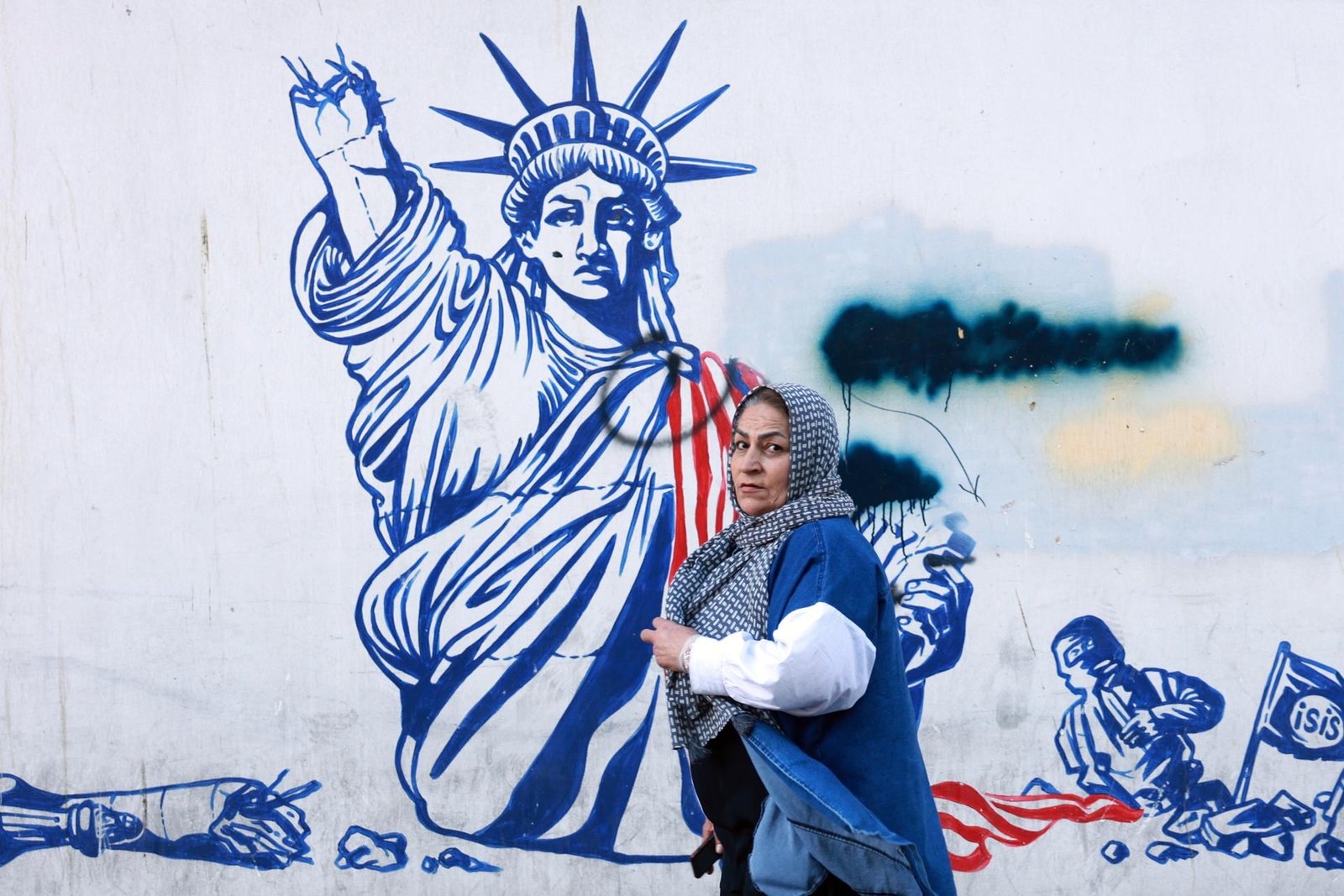An Iranian woman walks past an anti-US mural near the former US embassy in Tehran, Iran, 06 November 2024. EFE-EPA/ABEDIN TAHERKENAREH
By Jaime León
Tehran, Nov 16 (EFE).- Tehran’s walls have become vibrant canvases of state propaganda, filled with messages targeting Israel and the United States.
From threats of retaliation to memorials of conflict, the murals reflect decades of ideological and geopolitical tension rooted in the Islamic Revolution.
The walls serve as a striking bulletin board, encapsulating the simmering tensions in the Middle East.

Messages like “Prepare your coffins,” accompanied by depictions of missiles, and “None of the hostages will be released” dominate the urban landscape, reinforcing Iran’s narrative of resistance.
Experts such as Iranologist Raffaele Mauriello describe this state-sponsored muralism as a “war of images,” a tradition rooted in the aftermath of the 1979 Islamic Revolution and inspired by the Mexican Revolution’s (1910–1917) muralist movement.
One prominent site for these murals is Palestine Square in central Tehran. There, a recent mural in Hebrew and Persian declared, “There is another storm coming,” hinting at retaliation for the late October Israeli strike that killed five Iranians.
Murals of War and Defiance
Earlier this year, a mural featuring missiles and the Hebrew phrase “Prepare your coffins” preceded an Iranian attack on Israel in response to the deaths of Revolutionary Guard members in Syria.
The streets of Tehran were soon plastered with celebratory posters showcasing missiles and drones, marking an Iranian strike of around 300 projectiles. Despite its scale, the attack caused minimal damage.

Months later, another mural in Valiars Square proclaimed, “If they want war, we are experts in war,” alongside imagery of missiles hitting Israel during a subsequent attack on October 1 involving 180 missiles.
The murals do more than depict military threats. One recent work in Palestine Square showed photographs of hostages taken by Hamas during the Oct. 7 attack on Israel, with the message in Hebrew: “None of the hostages will be released.”Other murals caricature Israeli leaders, such as a May piece portraying Benjamin Netanyahu with features reminiscent of Adolf Hitler.
Currently, a mural in the same square depicts Uncle Sam leading Israeli soldiers, captioned “The United States is the great Satan,” in reference to the ongoing Gaza and Lebanon conflicts.
Art as Propaganda

The use of murals for political messaging emerged during the revolution that birthed the Islamic Republic in 1979.
Inspired by the Mexican muralist art of Diego Rivera, José Clemente Orozco, and David Alfaro Siqueiros, revolutionary artists sought to convey their anti-imperialist and anti-capitalist ideals.
Today, Tehran boasts around 700 murals, blending aesthetic, cultural, and political themes.
While some celebrate revolutionary martyrs and religious motifs, others make clear who Iran considers its adversaries, predominantly the United States and Israel.A notable example is the former US embassy in Tehran, seized by students on Nov. 4, 1979, and now transformed into an anti-American museum.
Its façade features murals such as a decaying Statue of Liberty and Mickey Mouse wielding a gun. Nearby, a former secret police headquarters displays an American flag overlaid with bombs and the slogan “Down with the USA.”
Beneath these murals lies a quote from Ayatollah Ruhollah Khomeini: “We will never reach an agreement, not even for a moment, with the United States.”
The art of Tehran’s walls serves as a vivid reminder of the ideological battles that continue to shape the region. EFE
ash-jlr-ssk
